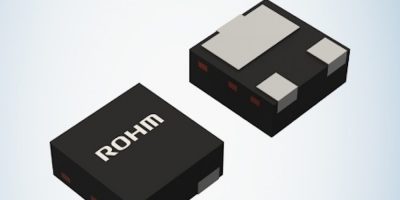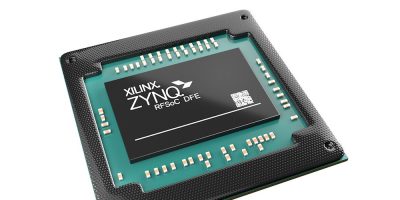Measuring just 1mm2, the RV8C010UN, RV8L002SN and BSS84X AEC-Q101- qualified MOSFETs are suitable for high-density applications such as ADAS and automotive ECUs.
Increased electrification has led to more electronic and semiconductor components used per vehicle. For example, the average number of multilayer ceramic capacitors (MLCCs) and semiconductor components installed in a single automotive ECU is expected to increase by 30 per cent, from 186 in 2019 to 230 in 2025. At the same time, such high density automotive applications demand greater miniaturisation, which has led to research into bottom electrode packages and their heat dissipation in a compact form factor.
One area that developers are investigating is mounting options for bottom electrode packages. For automotive parts, automated optical inspection (AOI) is performed after mounting to ensure reliability, but with bottom electrode components the solder joint cannot be verified because the terminals are not visible. This makes it difficult to conduct visual inspection that meets automotive standards, explains Rohm Semiconductor. Its Wettable Flank technology ensures a side electrode height of 125 micron in the 1.0 x 1.0mm package.
According to Rohm, the compact, high heat dissipation MOSFETs support high density mounting, achieving the same performance as 2.9 x 2.4mm packages (SOT-23 packages) in the smaller 1.0 x 1.0mm package (DFN1010 packages). As a result, the mounting area is reduced by approximately 85 per cent.
At the same time, adopting a high heat dissipation bottom electrode structure improves heat dissipation (which normally decreases with size) by up to 65 per cent over an SOT-23 package, says Rohm.
It is increasingly being adopted by vehicle manufacturers, says the company because it achieves high solder mounting reliability during AOI. In addition, the bottom electrode package provides miniaturisation and high heat dissipation, making it ideal for advanced driver assistance systems (ADAS) and automotive electronic control units (ECUs) featuring higher board densities.
Application examples are switching and reverse connection protection, autonomous driving control ECUs, in-car infotainment systems, engine control ECUs, drive recorders and ADAS applications.
All three MOSFET series are in mass production.






